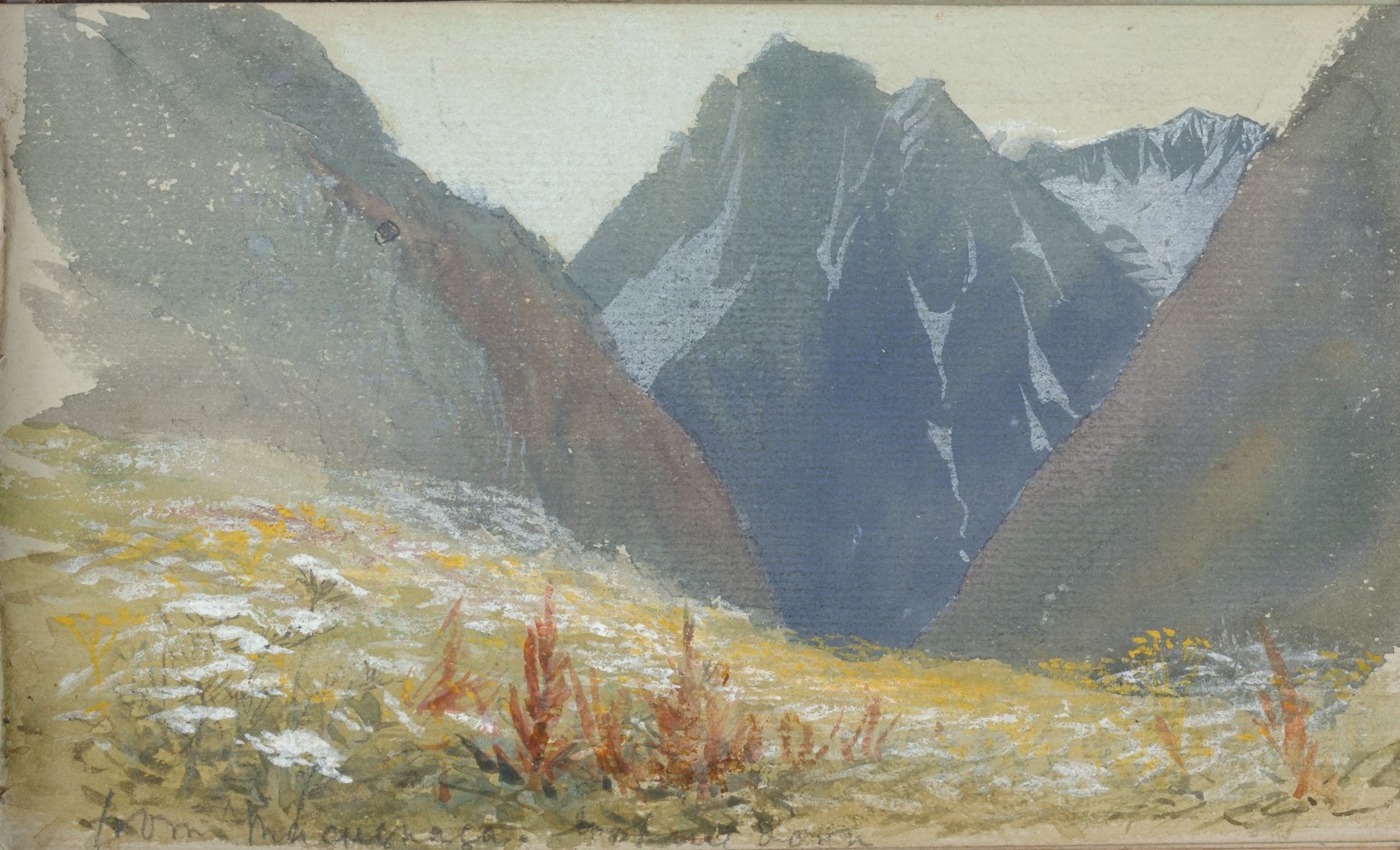 Last night we watched Many Beautiful Things: The Life and Vision of Lilias Trotter, the story of a young woman with the potential to become one of the greatest painters of her time who chose, instead, to give up her dream to pursue her true calling—going to North Africa as a missionary. Throughout the movie we see examples of her artwork—mountains and seas, gardens and deserts—vibrant, compelling paintings that take us into her soul. In the video we meet her biographer, Miriam Huffman Rockness, and others who have worked to preserve the life and the work of Lilias Trotter. Michelle Doclery (of Downton Abbey) is the voice for Lilias Trotter.
Last night we watched Many Beautiful Things: The Life and Vision of Lilias Trotter, the story of a young woman with the potential to become one of the greatest painters of her time who chose, instead, to give up her dream to pursue her true calling—going to North Africa as a missionary. Throughout the movie we see examples of her artwork—mountains and seas, gardens and deserts—vibrant, compelling paintings that take us into her soul. In the video we meet her biographer, Miriam Huffman Rockness, and others who have worked to preserve the life and the work of Lilias Trotter. Michelle Doclery (of Downton Abbey) is the voice for Lilias Trotter.
But the film does not tell Lilias’ full story. My introduction to this complex, passionate woman born a century before me came several years ago through the reading of Miriam Huffman Rockness’ book, A Passion for the Impossible: The Life of Lilias Trotter. It is among the best books I have ever read. The library copy took quite a beating during the weeks I had it out as I read and re-read sections, cross referenced passages, and waited for my own copy to arrive.
Lilias Trotter was born into a privileged home in London in 1853. She was extraordinarily gifted as an artist and was self-taught until she was a young adult, when she met John Ruskin, a famed art critic and social philosopher. Ruskin recognized her gifts and tutored her, expecting her to make art her life.
But Lilias was, at the same time, being challenged in her faith by attending conferences and listening to the preaching of D.L. Moody and Robert Pearsall Smith and his wife, Hannah Whitall Smith. This led her to serve the poor, lead an adult Bible study group, and minister to the working women of London. She also was feeling God’s call to take His message to the world.
At the age of 35, Lilias turned her back on pursuing art as a career and set off with two friends to Algeria, where they would work alongside the North African Mission. (Lilias’s heart was weak and the mission board considered her health too poor to accept her as a missionary! Undaunted, Lilias funded her missionary work from her own resources and with the support of many of the women to whom she had shown hospitality in London. She served in Algeria until her death at the age of 75, her weak heart notwithstanding!
Lilias’s journals, letters, books, booklets, and story parables provided her biographer with a rich resource of material to draw from when writing about her life. And throughout Lilias’s writings were lovely drawings and illustration, some of which are included in the book. She was a woman of prayer and she seemed to trust God absolutely. Her love for the people of North Africa and for her fellow missionaries was evident throughout the book, and her vision to reach into new areas to share the Gospel was remarkably far-sighted.
She accomplished much in her life, yet she was never in a hurry. “Time is nothing to God — nothing in its speeding, nothing in its halting — He is the God that inhabiteth eternity.” And children of eternity “can afford to tarry His leisure no matter how short [their] time is.” (p. 285) Nor did she stress when things did not go according to her plans. “One learns as one goes on, not to fear the detours by which God leads on.” (p. 317)
goes on, not to fear the detours by which God leads on.” (p. 317)
Seventy years after Lilias’ death, Margaret Ross, the daughter of missionaries with North Africa Mission in Algeria, recounted: “Once when about five and my brother three, we were staying at Dar Naama and were told to go and play in the garden but not to speak to L.T. and worry her. She was sitting painting flowers. She called me and I did not go, but when she called again, my brother went up and said, ‘We mustn’t worry you.’ ‘Oh, you’re not. Tell your sister to come; I want to show you something.’ This was a beautiful flower, and she told us all about it—all the parts—then spoke of God’s creation and love for the beautiful things He gave to us whom He loved dearly. She went on to speak of Jesus and his love. We knew she prayed for us and felt her love for the two little M.K’s whose father had died of typhus.” (p. 328).
The life of Lilias Trotter is a tangible demonstration of God’s grace at work through a willing heart. She continues to shine for Christ through her wonderfully documented life story.
The photo above is Lilian Trotter’s painting called “Mountain Scene.” Used by permission.
Check out this website for more about Lillias Trotter, the books written by her and about her, and to see a trailer for the film, Many Beautiful Things. Or go to the Lillias Trotter Legacy page on Facebook.





Thank you for retelling this story. Now I must read the book!
It’s a moving story, and I think you will enjoy it, Joan.
Ginger